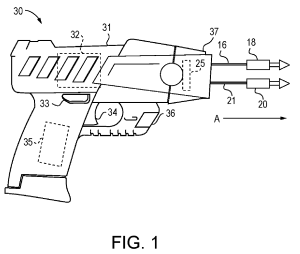PhaZZer v. Taser (Supreme Court 2020) [Petition for writ of certiorari]
PhaZZer defaulted in the litigation and the district court awarded $7.8 million to Taser. On appeal, the Federal Circuit quickly issued a R.36 no-opinion affirmance in 2019. Then, in February 2020 the USPTO finally cancelled the claims of the asserted patent (via reexamination). US7234262.
